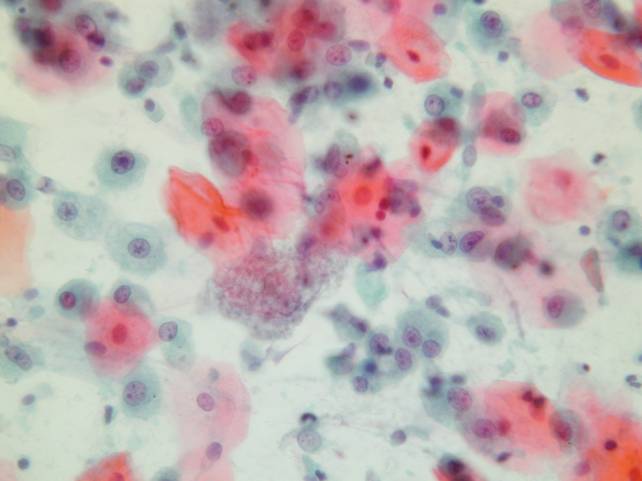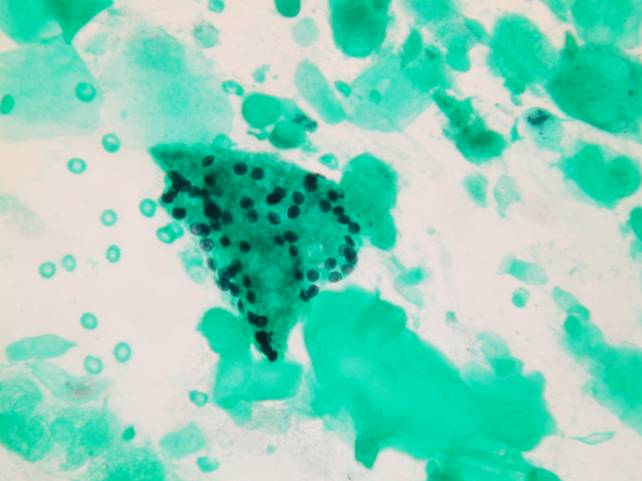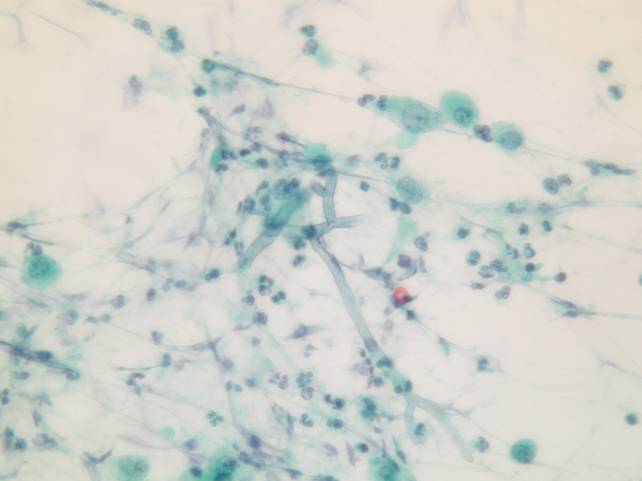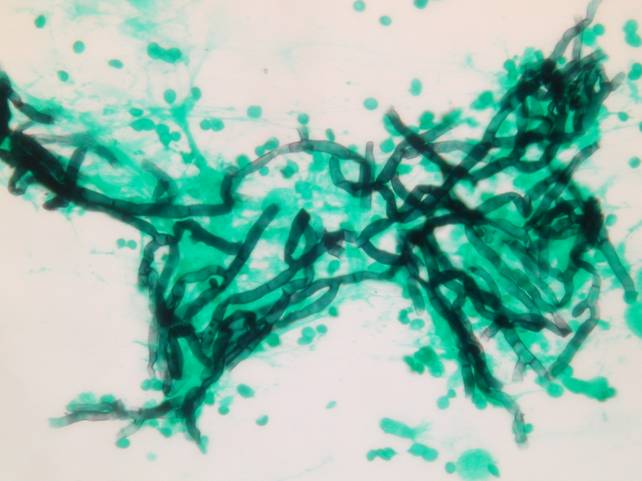This content is also available in:
Español
Pulmonary fungal infections are readily diagnosed by cytology; they often arise in immunocompromised patients. They should be always suspected whenever granulomatous inflammation is present, sometimes together with neutrophils. Cell blocks can be used for silver or periodic acid-Schiff (PAS) stains. Many fungi have a characteristic structure that enables a specific diagnosis.
Several fungal infections can affect the lung, such as Cryptococcosis, Histoplasmosis, Coccidioidomycosis, Aspergillosis, Candidiasis.
Bronchopulmonary aspergillosis is characterized by the expectoration of mucus plugs containing fungal organisms (appearing as hyphae septate or fruiting bodies in cavities), numerous eosinophils and Charcot-Leyden crystals.
Candida pneumonia is a common opportunistic infection. The organisms appear as budding yeasts forming pseudohyphae.
Actinomyces, which are recognized by their radiating filaments, may also appear in BAL specimens because of oral contamination.





